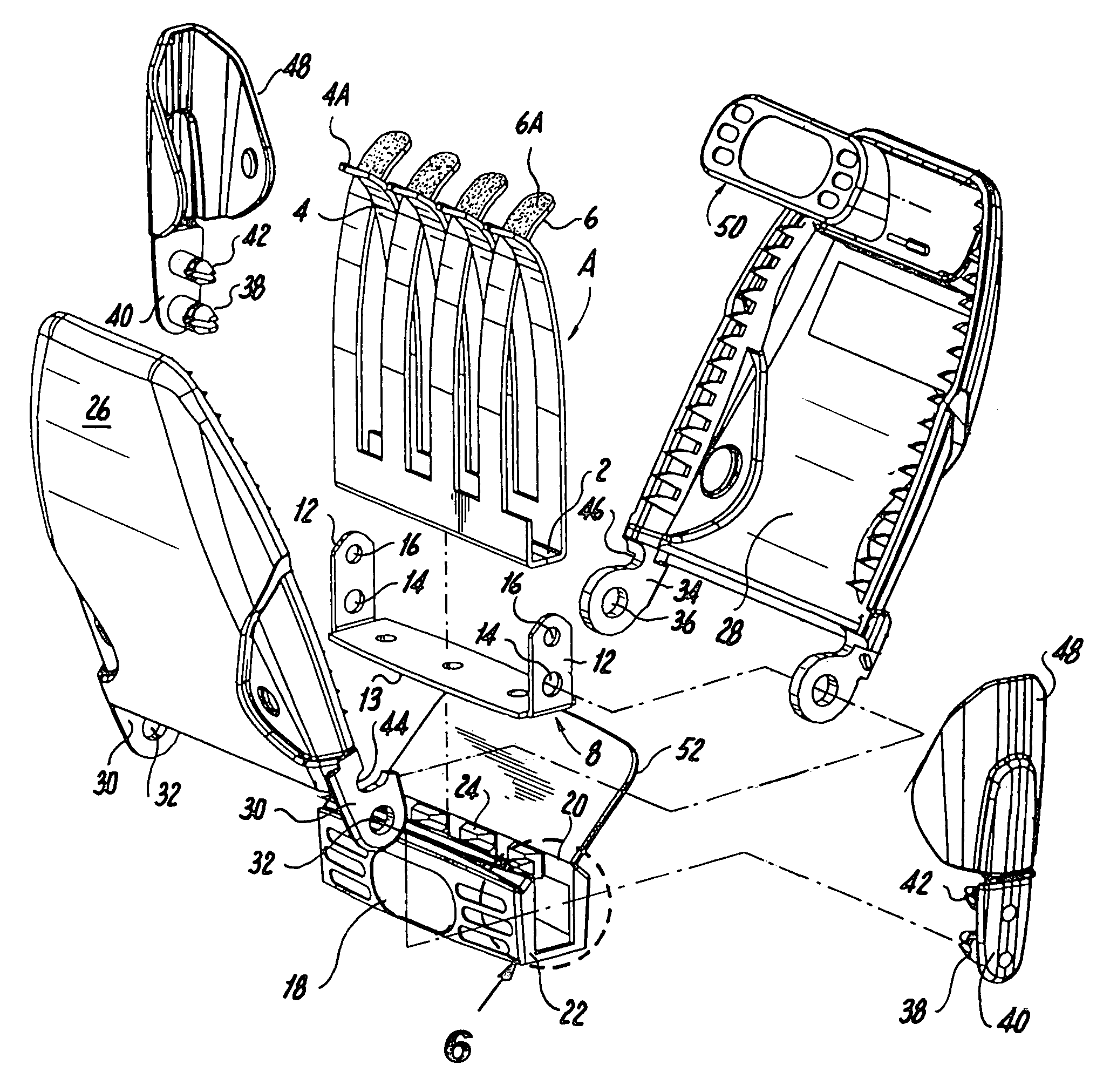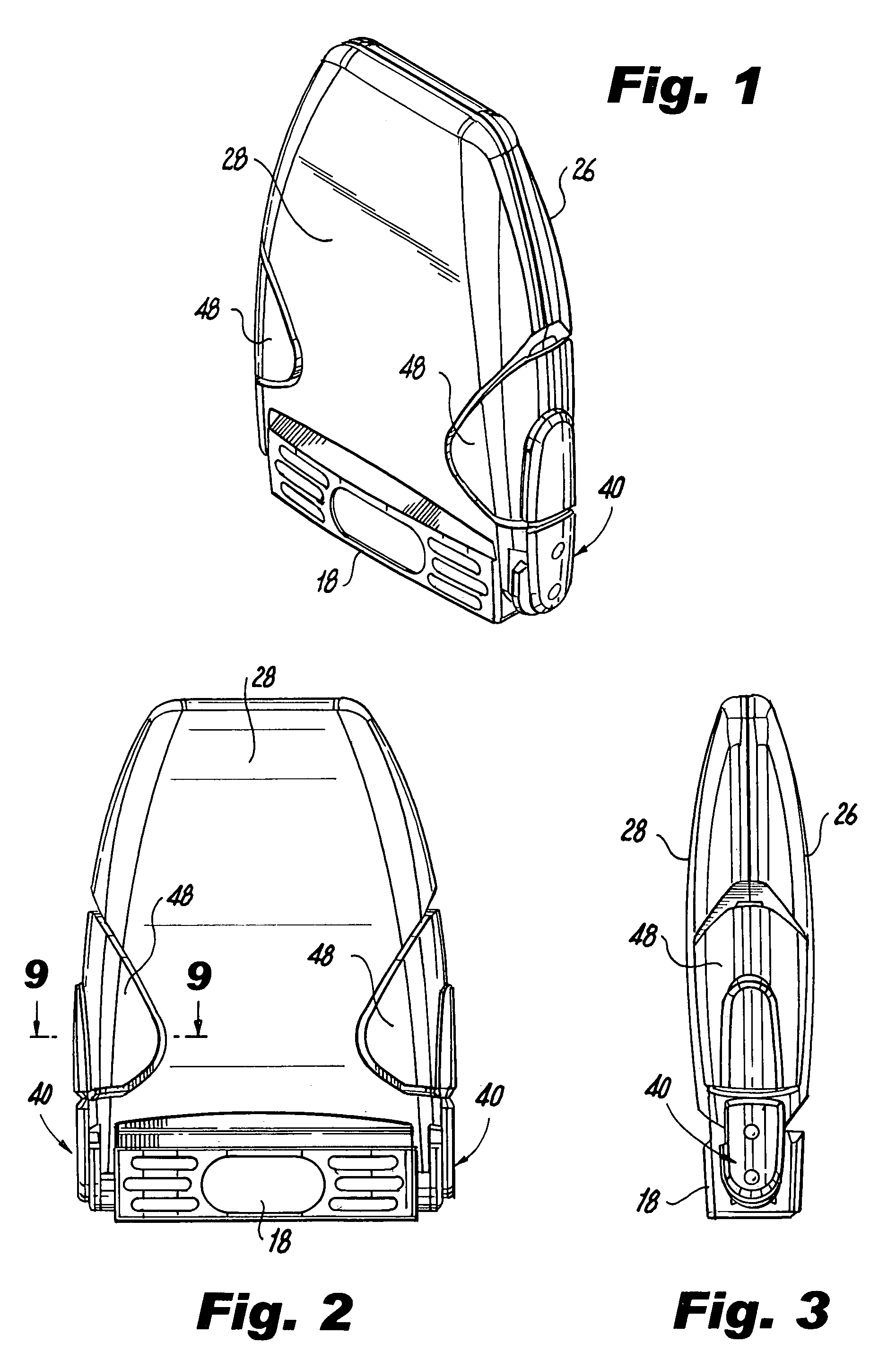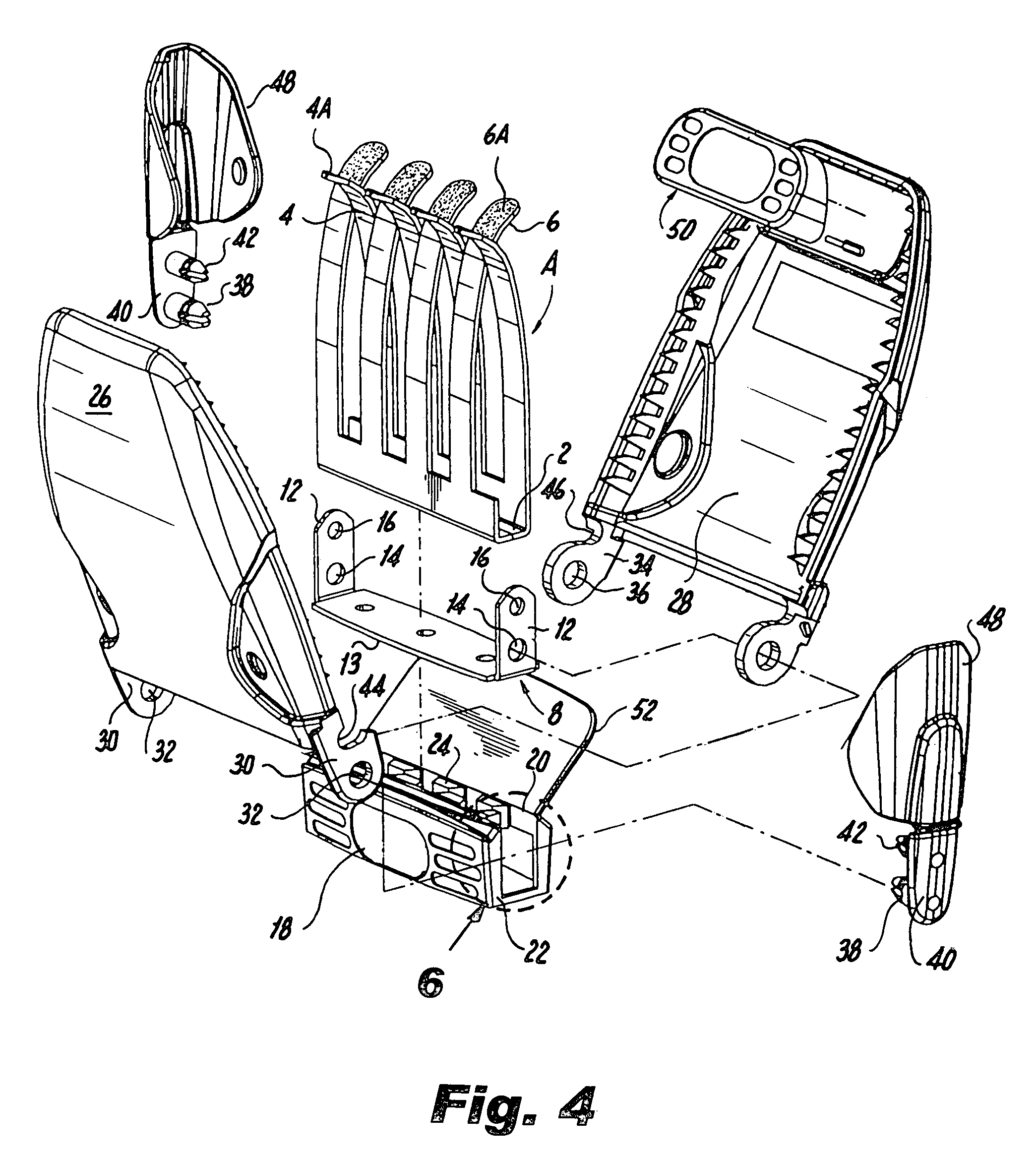Knife sharpener
a sharpener and blade technology, applied in the field of sharpeners, can solve the problems of resilient flexible fingers, physical damage or distortion, hand injury, etc., and achieve the effects of preventing damage to the environment, enhancing protection, and protecting from deterioration, damage or abus
- Summary
- Abstract
- Description
- Claims
- Application Information
AI Technical Summary
Benefits of technology
Problems solved by technology
Method used
Image
Examples
Embodiment Construction
[0019]The knife sharpener device per se may be of the general type shown in U.S. Pat. No. 6,769,327. In its specific form here it is of the form of a finger assembly generally designated A, which comprises an elongated narrow bottom wall 2 from which resilient staggered sets of curved fingers 4 and 6 respectively extend upwardly, the fingers 4 at their upper extremities entering into the spaces between the fingers 6 and vice versa, the outwardly facing surfaces 4A and 6A of the fingers 4 and 6 being appropriately abrasive in nature, all as described in the aforementioned '327 patent. The finger assembly A is mounted on a base generally designated 8 comprising an elongated bottom wall 10 and upstanding side walls 12, the latter being provided with two sets of matching apertures 14 and 16 respectively. Both the finger assembly 2, 46 and the base 8 may be formed of metal and finger assembly A may be secured to the base 8 in any appropriate manner, as by spot welding.
[0020]The assembled...
PUM
 Login to View More
Login to View More Abstract
Description
Claims
Application Information
 Login to View More
Login to View More - R&D
- Intellectual Property
- Life Sciences
- Materials
- Tech Scout
- Unparalleled Data Quality
- Higher Quality Content
- 60% Fewer Hallucinations
Browse by: Latest US Patents, China's latest patents, Technical Efficacy Thesaurus, Application Domain, Technology Topic, Popular Technical Reports.
© 2025 PatSnap. All rights reserved.Legal|Privacy policy|Modern Slavery Act Transparency Statement|Sitemap|About US| Contact US: help@patsnap.com



